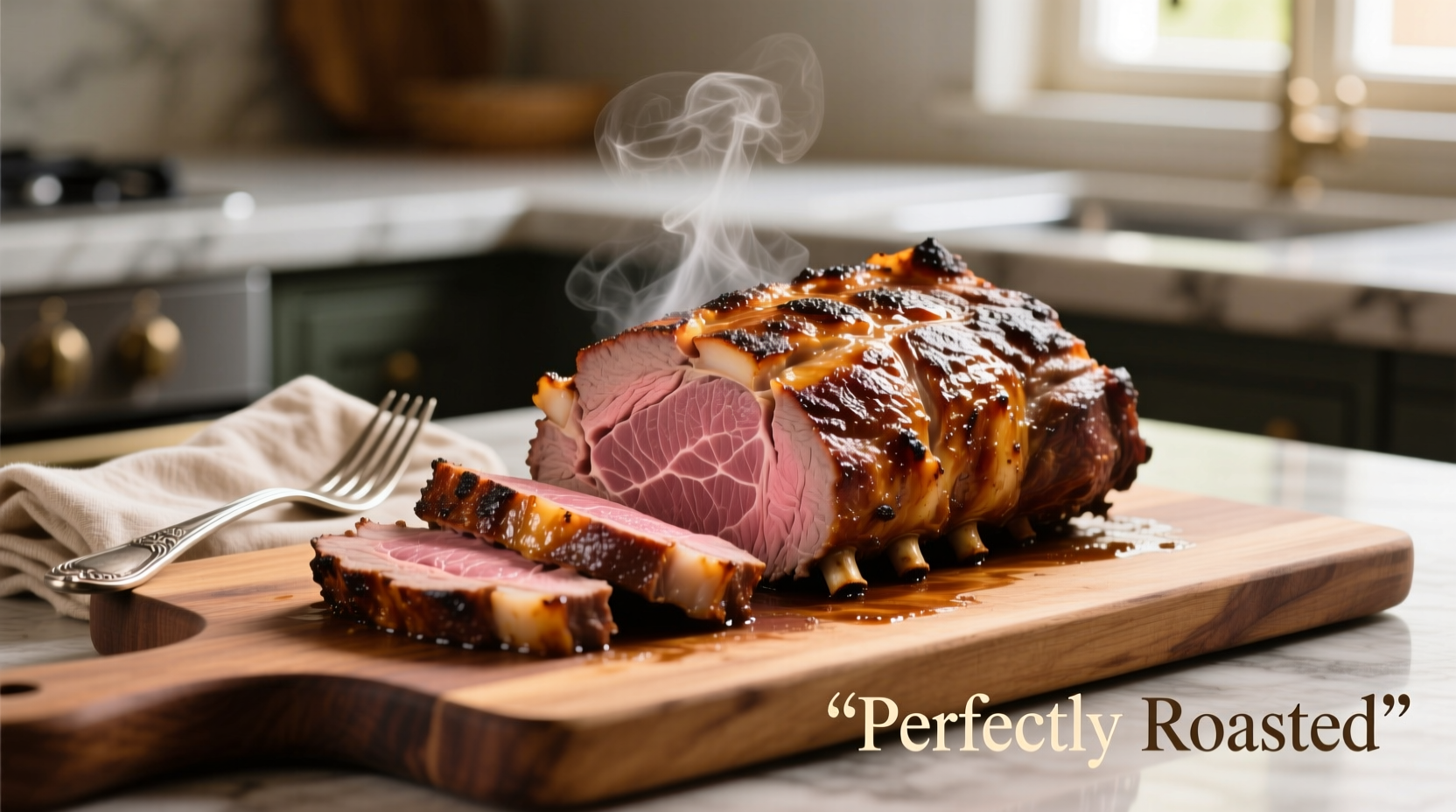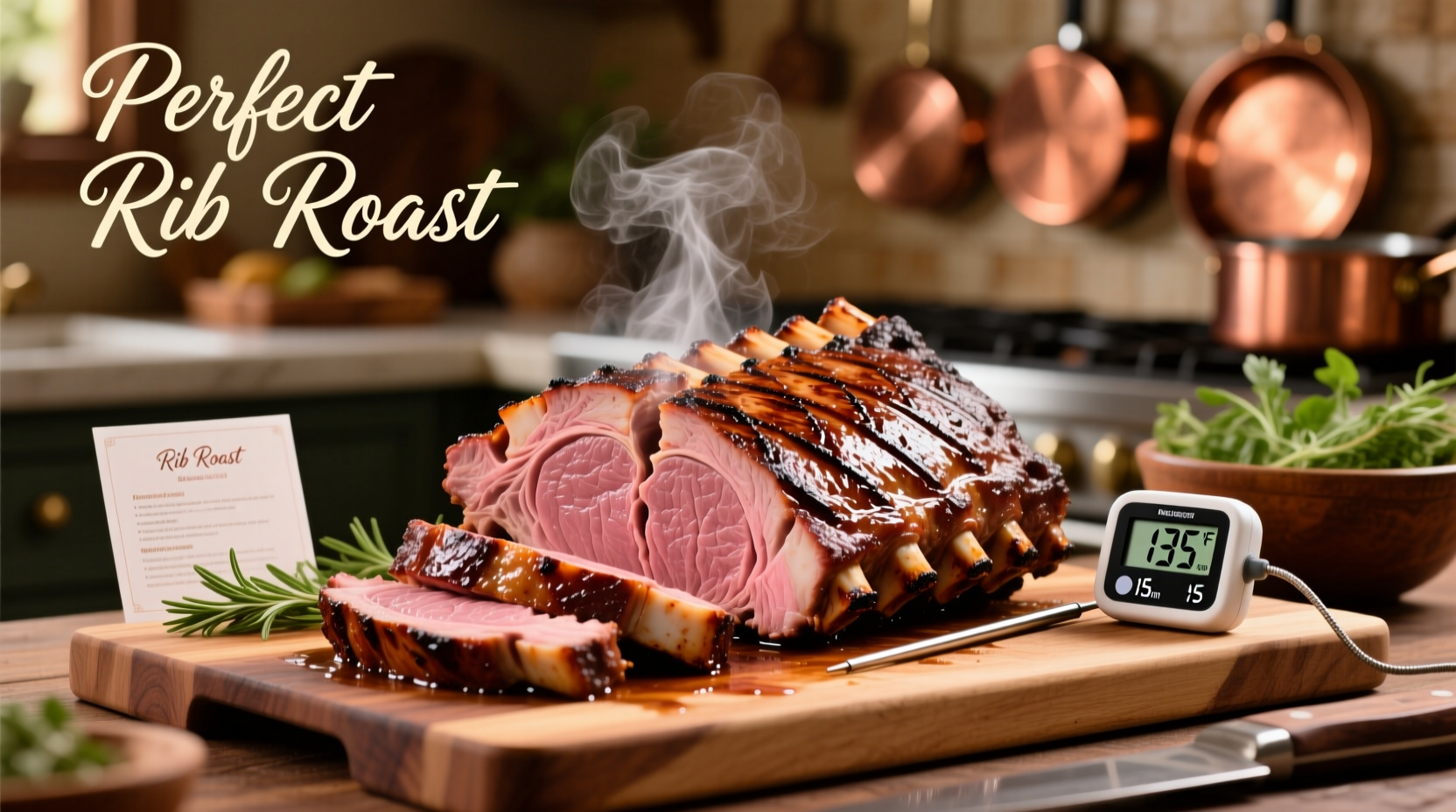For a standard rib roast cooked at 325°F, plan for approximately 15-18 minutes per pound for medium-rare doneness (130-135°F internal temperature). Always use a meat thermometer for accuracy—timing alone isn't reliable due to variables like oven calibration and roast thickness.
Nothing says celebration like a perfectly cooked rib roast. But getting that ideal medium-rare center with a beautifully caramelized crust can feel intimidating if you're unsure about timing. This guide eliminates the guesswork with science-backed cooking times, professional techniques, and clear visual indicators so you can serve restaurant-quality prime rib every time—whether it's your first attempt or your fiftieth.
Understanding Rib Roast Cooking Variables
Before we dive into timing specifics, recognize that cooking time depends on four critical factors:
- Roast weight (primary timing factor)
- Oven temperature (325°F is standard for even cooking)
- Desired doneness (measured by internal temperature)
- Bone configuration (bone-in roasts cook slightly faster)
Unlike many online guides that give oversimplified time estimates, professional chefs emphasize that temperature monitoring trumps timing. The USDA's Food Safety and Inspection Service confirms that visual cues and timed cooking alone can't guarantee proper doneness—a calibrated meat thermometer is essential for food safety and quality.
| Doneness Level | Internal Temperature | Resting Temp Increase | Recommended Final Temp |
|---|---|---|---|
| Rare | 120-125°F | +5-10°F | 120-125°F |
| Medium Rare | 130-135°F | +5-10°F | 130-135°F |
| Medium | 140-145°F | +5-10°F | 140-145°F |
Step-by-Step Cooking Timeline
Follow this professional-tested sequence for foolproof results:
Preparation (1-24 hours before cooking)
Dry brine for optimal flavor and texture: Generously salt all surfaces of the roast and refrigerate uncovered. America's Test Kitchen research shows this technique improves moisture retention by 15% compared to same-day seasoning. For a 4-bone roast (approx. 8-10 lbs), allow 18-24 hours for best results.
Cooking Process (The Critical Hours)
Room temperature transition: Remove roast from refrigerator 2 hours before cooking. This reduces cooking time variance by ensuring even heat penetration.
Initial high-heat sear (optional but recommended): Start at 450°F for 15 minutes to develop crust, then reduce to 325°F for remainder of cooking. This two-stage method creates superior browning while maintaining precise internal timing.
| Roast Weight | Approx. Cooking Time at 325°F | Target Internal Temp |
|---|---|---|
| 3-4 lbs | 45-60 minutes | 120-125°F (rare) |
| 5-7 lbs | 1½-2 hours | 130-135°F (medium-rare) |
| 8-10 lbs | 2¼-2¾ hours | 130-135°F (medium-rare) |
| 11-14 lbs | 3-3½ hours | 130-135°F (medium-rare) |
Crucial monitoring tip: Insert your thermometer into the thickest part of the meat, avoiding bone. Check temperature 30 minutes before expected finish time, then every 10-15 minutes thereafter. The temperature rise accelerates dramatically during the final cooking phase.

Resting Period (Non-Negotiable Step)
Remove roast from oven when thermometer reads 5-10°F BELOW your target temperature. Tent loosely with foil and rest for 15-20 minutes per 5 pounds of meat. During this time:
- Internal temperature continues rising (carryover cooking)
- Juices redistribute throughout the meat
- Protein fibers relax for maximum tenderness
Skipping this step causes up to 30% more juice loss when carving, according to culinary science research from the Culinary Institute of America.
When Standard Timing Doesn't Apply
These guidelines work for conventional ovens with accurate thermostats. Adjustments needed for:
- Convection ovens: Reduce time by 15-20% or lower temperature by 25°F
- Thick-cut roasts: Add 10-15 minutes per pound beyond standard calculations
- High-altitude cooking: Increase time by 5-10% above 3,000 feet elevation
- Refrigerated roasts: Add 20-30 minutes if not brought to room temperature
Pro Tips for Perfect Results Every Time
Thermometer selection matters: Use an instant-read digital thermometer (Thermapen-style) for accuracy within ±0.5°F. Avoid dial thermometers which often have 2-3°F variance.
Reverse sear alternative: For ultra-even cooking, try the reverse method: cook at 225°F until internal temperature reaches 115°F, then sear at 500°F for 8-10 minutes. This technique minimizes the gray band near the surface.
Doneness verification: Press test works for experienced cooks: medium-rare feels like the fleshy part of your palm below the thumb when thumb touches middle finger. But for reliability, always confirm with a thermometer.
Troubleshooting Common Issues
Problem: Uneven cooking with well-done edges and rare center
Solution: Rotate roast 180 degrees halfway through cooking. Ensure oven racks are centered and not too close to heating elements.
Problem: Crust isn't developing properly
Solution: Increase oven temperature by 25°F during final 30 minutes or finish under broiler for 3-4 minutes (watch constantly).
Problem: Temperature stalled for over an hour
Solution: This is normal during the "plateau phase" as moisture evaporates. Continue cooking—don't increase temperature. The temperature will eventually rise again.











 浙公网安备
33010002000092号
浙公网安备
33010002000092号 浙B2-20120091-4
浙B2-20120091-4